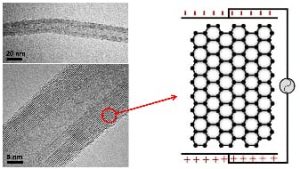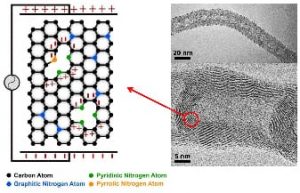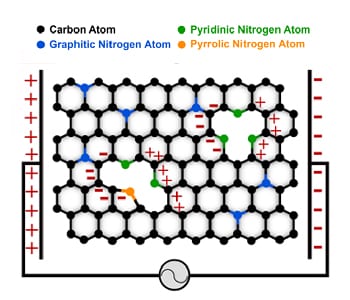As the electronics industry aims to obtain superior performance, the number of components within printed circuit boards (PCBs) is increasing. Accordingly, embedding PCB components, such as capacitors, is suggested as a viable solution to generate advanced PCBs with high integrity. This technology can revolutionize the electronics industry because of advantages such as enhanced PCB integrity, reduction of discrete capacitors, shorter electrical path, electromagnetic interference reduction, enhanced CPU speed, lower operation voltage, lower cost, and potential for miniaturization.
Conductive filler/polymer nanocomposites (CPNs) are being considered as potential constituting materials for embedded capacitors due to their lightweight, low cost, easy processability, good adhesion strength, and tunable dielectric properties. Tunable dielectric properties in CPNs arise from the formation of an enormous number of nanocapacitor structures within the polymer matrix, with conductive nanofillers acting as nanoelectrodes and polymer matrix acting as nanodielectric. In addition to nanocapacitor structures, charge polarization within conductive nanofillers can also contribute to charge storage capacity of CPNs, particularly at high frequencies.
 Among various conductive nanofillers used in CPNs, Carbon nanotubes (CNTs) are seen as revolutionary conductive nanofillers for charge storage applications, due to their large surface area and excellent electrical, thermal, and mechanical properties. Researchers from the University of Calgary in Canada and Washington State University Tri-Cities in the US manipulated the structure of CNTs by introducing nitrogen between carbon atoms in CNTs, and succeeded in improving the charge storage capacity of CNT/polymer nanocomposites.
Among various conductive nanofillers used in CPNs, Carbon nanotubes (CNTs) are seen as revolutionary conductive nanofillers for charge storage applications, due to their large surface area and excellent electrical, thermal, and mechanical properties. Researchers from the University of Calgary in Canada and Washington State University Tri-Cities in the US manipulated the structure of CNTs by introducing nitrogen between carbon atoms in CNTs, and succeeded in improving the charge storage capacity of CNT/polymer nanocomposites.
 The images shows how the structure of CNTs can be used to store electrical energy. Undoped CNTs (top image) exhibit an internal open channel with an ordered crystalline structure. However, Nitrogen-doped CNTs (bottom image) present a bamboo-like structure having closed caps, with a cap-to-cap distance of ~20-25 nm in each compartment. It can be seen in the image that nitrogen atoms and their sequence defects in the crystalline structure of CNTs play the role of polarization centers, improving the charge storage capacity of CNT/polymer nanocomposites.
The images shows how the structure of CNTs can be used to store electrical energy. Undoped CNTs (top image) exhibit an internal open channel with an ordered crystalline structure. However, Nitrogen-doped CNTs (bottom image) present a bamboo-like structure having closed caps, with a cap-to-cap distance of ~20-25 nm in each compartment. It can be seen in the image that nitrogen atoms and their sequence defects in the crystalline structure of CNTs play the role of polarization centers, improving the charge storage capacity of CNT/polymer nanocomposites.

















